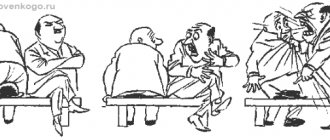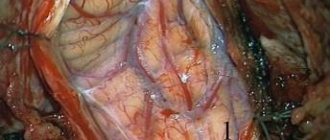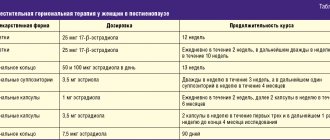What is Werdnig-Hoffman disease?
Werdnig-Hoffman disease is spinal muscular atrophy type 1 (SMA type 1). Spinal muscular atrophies are characterized by the degeneration of nerve cells (motor nuclei) in the lowest part of the brain (lower brainstem) and certain motor neurons of the spinal cord (anterior horn cells), leading to muscle weakness of the brainstem and limb muscles initially, followed by difficulty chewing , swallowing and breathing. Motor neurons are nerve cells that transmit nerve impulses from the spinal cord or brain (central nervous system) to muscle or glandular tissue.
Approximately 80 percent of patients with SMA have a severe form of it (i.e., Werdnig-Hoffmann disease or SMA 1). Infants with Werdnig-Hoffman disease experience severe weakness before 6 months of age and are unable to sit independently when placed. Muscle weakness, lack of motor development and low muscle tone are the main clinical manifestations of SMA type 1. Infants with the worst prognosis have problems sucking or swallowing. Some people experience diaphragmatic (abdominal) breathing in the first few months of life. Abdominal breathing is noted when the abdomen protrudes forward during inhalation. Typically, the rib cage expands during inhalation because the intercostal muscles (the muscles between the ribs) expand during inhalation. Abdominal breathing occurs when the intercostal muscles are weak and the diaphragm muscle is responsible for inhalation. The movement of the diaphragm (the muscle between the chest and abdomen) expands, causing the abdomen to move during the inhalation cycle. Twitching of the tongue (fasciculations) is often observed. Cognitive development is normal. Most affected children die before age 2 years, but survival may depend on the degree of respiratory function and respiratory support.
The different subtypes, SMA 0–4, depend on the age of onset of symptoms and the course and progression of the disease. SMA is a continuum or spectrum of disease with mild and severe ends. Patients with SMA 0 are very weak at birth, require immediate mechanical ventilation, and are never able to breathe on their own. Werdnig-Hoffmann disease, also known as spinal muscular atrophy type 1 (SMA 1) or acute spinal muscular atrophy, refers to people who begin to experience symptoms before the age of 6 months. Patients with SMA 2 become symptomatic before age 1 year and can sit but never walk. Patients with SMA 3 (Kugelberg-Welander disease) become symptomatic after 1 year and can walk for a period of time before losing motor ability. Patients with SMA type 4 will not develop symptoms until much earlier than 10 years.
All spinal muscular atrophies are inherited in an autosomal recessive manner. Molecular genetic testing has shown that all types of autosomal recessive SMA are caused by disorders or errors (mutations) in the SMN1 gene (from the English Survival of motor neuron 1, which means survival motor neuron 1) on chromosome 5.
Principles of treatment of spinal amyotrophy
Unfortunately, this is an incurable hereditary disease. At the present stage, research is being conducted that may help regulate the synthesis of the SMN protein, but there are no results yet.
The following help alleviate the condition of patients with spinal amyotrophy:
- periodic course intake of drugs that improve the metabolism of nervous tissue and muscles (Cerebrolysin, Cytoflavin, Glutamic acid, ATP, Carnitine chloride, Methionine, Potassium orotate, Tocopherol acetate, etc.);
- B vitamins (Milgamma, Neurovitan, Combilipen);
- anabolic steroids (Retabolil, Nerobol);
- agents that improve neuromuscular conduction (Proserin, Neuromidin, Galantamine, Dibazol);
- massage and physical therapy courses;
- physiotherapy (electrical muscle stimulation, carbon sulfide baths);
- methods of orthopedic correction (with the development of joint contractures and spinal deformities).
Werdnig-Hoffmann spinal amyotrophy, like other forms of this disease, is a pathology that is inherited. The appearance of the disease in a child is explained by the presence of a mutant gene in both the mother and father. The disease is characterized mainly by muscle weakness, which causes immobility and respiratory problems. The disease is currently incurable.
Signs and symptoms
The symptoms and progression of SMA type 1 or Werdnig-Hoffmann disease vary from person to person. Affected infants are weak until 6 months of age. Early signs include general muscle weakness, decreased muscle tone (hypotonia) leading to “flaccidity,” abnormal joint flexibility (hypermobility), absent tendon reflexes, tongue twitching (fasciculation), and a frog-like posture with hips apart and knees bent. , as well as a wary (anxious) appearance. The facial muscles are not initially affected. Mental development is usually normal. The child usually has no head control, cannot roll over, and cannot sit or stand. In addition, children with SMA may have difficulty sucking, swallowing, and breathing; increased susceptibility to respiratory infections, or other complications that can lead to potentially life-threatening abnormalities in the first months or years of life.
Infants who appear to be developing normally in the months before muscle weakness begins may have a more slowly progressive course. The muscles of the lower extremities are disproportionately affected. As the disease progresses, decreased muscle tone and weakness can gradually spread and affect almost all voluntary muscles, with the exception of certain muscles that control eye movements.
The rate of progression of Werdnig-Hoffmann disease varies. Difficulty breathing (shortness of breath) and constipation may develop within a few months. The baby may be unable to swallow. Respiratory failure may occur, or food entering the lungs (aspiration) may cause suffocation. Most affected children die before age 2 years, but survival may depend on the degree of respiratory function.
Other diseases - clinics in
Choose among the best clinics based on reviews and the best price and make an appointment
Family
Scoliosis Treatment Center named after K. Schroth
Moscow, st.
Azovskaya, 24, building 2 POM VI/KOM 5,6,7/ET 1 Sevastopolskaya
+7
- Consultation from 1500
- Exercise therapy from 2700
0 Write your review
Family
Oriental Medicine Clinic "Sagan Dali"
Moscow, prosp.
Mira, 79, building 1 Rizhskaya
+7
- Consultation from 1500
- Diagnostics from 0
- Reflexology from 1000
0 Write your review
Family
Center for Chinese Medicine "TAO"
Moscow, st.
Ostozhenka, 8 building 3, 1st floor Kropotkinskaya
+7
- Consultation from 1000
- Massage from 1500
- Reflexology from 1000
0 Write your review
Show all Moscow clinics
Causes
All forms of spinal muscular atrophy are caused by mutations of the SMN1 gene (from the English Survival of motor neuron 1, which means survival motor neuron 1) in the chromosomal locus 5q11-q13. The second gene, known as the SMN2 (survival motor neuron 2) gene, plays a role in the development of SMA. The SMN2 gene is located next to the SMN1 gene on chromosome 5. Although SMA is caused by mutations in the SMN1 gene, there has been evidence that SMN2 influences the severity of the disease; people with more copies of the SMN2 gene tend to have a milder form of spinal muscular atrophy.
Chromosomes present in the nucleus of human cells carry its genetic information. Cells in the human body usually have 46 chromosomes. The pairs of human chromosomes are numbered 1 to 22, and the sex chromosomes are designated X and Y. Males have one X and one Y chromosome, and females have two X chromosomes. Each chromosome has a short arm, designated "p", and a long arm, designated "q". Chromosomes are further divided into many numbered bands. For example, "chromosomal locus 5q11-q13" refers to bands 11-13 on the long arm of chromosome 5. The numbered bands indicate the location of the thousands of genes present on each chromosome.
Genetic diseases are determined by a combination of genes for a certain trait, which are located on chromosomes received from the father and mother. All SMA is inherited in an autosomal recessive manner. Recessive genetic disorders occur when a person inherits the same abnormal gene for the same trait from each parent. If a person receives one normal gene and one disease gene, they will be a carrier of the disease, but usually asymptomatic. The risk for two carrier parents of passing on the defective gene and therefore having an affected child is 25% in each pregnancy. The risk of having a child who will be a carrier of the disease, like the parents, is 50% with each pregnancy. The probability that a child will receive normal genes from both parents and be genetically normal for a given trait is 25%.
The parents of several people with Werdnig-Hoffmann disease were close relatives. All people carry 4-5 abnormal genes. Consanguineous parents are more likely than unrelated parents to have the same abnormal gene, increasing the risk of having children with the recessive genetic disorder.
The specific underlying cause of Werdnig-Hoffmann disease is unknown. In SMA, the SMN1 and SMN2 genes produce (encode) a protein that is necessary for the proper functioning of motor neurons. The SMN1 mutation causes the gene to produce a defective protein that cannot perform its function. The SMN2 gene is thought to produce a partially effective protein that motor neurons need to function. This is why people with more copies of SMN2 have a milder form of SMA.
Additional genes may influence the development of SMA. Deletion of the NAIP (neuronal apoptosis inhibitory protein) gene, which is close to the SMN gene, may also be associated with SMA. A larger number of patients with Werdnig-Hoffman disease (SMA type 1) have NAIP deletions. Some researchers have suggested that loss of the NAIP gene and/or various mutations in the SMN gene may play a role in influencing disease severity. Some researchers also indicate that other genetic factors may contribute to the variable clinical manifestation of the disorder.
How is the diagnosis made?
To detect the disease in utero, amniotic fluid is collected.
Werdnig-Hoffmann spinal muscular atrophy can be detected before or after the birth of the child. Prenatal diagnosis is based on identifying a genetic defect. This requires obtaining the baby's genetic material from umbilical cord blood, amniotic fluid or chorionic villi. Invasive diagnostic methods are dangerous for the development of pregnancy, so parents often refuse them. If pathology is detected, this is an indication for abortion.
The birth of children with Werdnig-Hoffmann spinal muscular atrophy (SMA) is possible for several reasons. Not all hospitals have the opportunity for prenatal diagnosis of the disease and genetic counseling for parents before conceiving a baby. Parents carry out the analysis mainly at their own request and may not know until the moment of birth that the baby will be seriously ill. Sometimes the diagnosis is made at a late stage, when it is too late to terminate the pregnancy. The fundamental opposition to abortion among some parents also plays a role - even knowing about the future pathology, they decide to give birth.
After birth, the diagnosis is made by a neonatologist or pediatric neurologist. The neurological status of a small patient is important - impaired motor activity and extinction of reflexes while maintaining sensitivity. To make a final diagnosis, a DNA test is prescribed. MRI and CT scans of the spine are important to distinguish SMA from other pathologies. Disturbances in the motor nuclei of the spinal cord are not visualized.
Disorders with similar symptoms
Symptoms of the following diseases may be similar to those of Werdnig-Hoffmann disease. Comparisons can be useful for differential diagnosis:
- Prader-Willi syndrome is a rare genetic disorder characterized by decreased muscle tone (hypotonia), feeding difficulties, and inability to grow and gain weight (failure to thrive) in infancy; short stature; abnormalities of the genital organs; mental retardation. In addition, between approximately 6 months and 6 years of age, patients may develop excess weight (obesity), especially in the lower parts of the body (eg, lower abdomen, thighs, buttocks). Progressive obesity occurs as a result of insufficient physical activity and excessive food consumption, which can be associated with a lack of satisfaction (fullness) after finishing a meal, obsession with food, unusual eating rituals and eating habits that cause overeating. Patients with Prader-Willi syndrome may also have a characteristic facial appearance due to certain features, including almond-shaped eyes, a thin upper lip, and full cheeks. The diagnosis is made on the basis of chromosomal analysis.
- Pompe disease is an inherited metabolic disorder caused by a complete or partial deficiency of the enzyme alpha-acid glucosidase. This enzyme deficiency causes excess glycogen to accumulate in the lysosomes of many cell types, but predominantly in muscle cells, including cardiac muscle cells. Pompe disease is a single continuum of disease with a variable rate of progression. The infantile form is characterized by severe muscle weakness and abnormally decreased muscle tone (hypotonia) and usually appears during the first few months of life. Additional abnormalities may include enlargement of the heart (cardiomegaly), liver (hepatomegaly), and/or tongue (macroglossia). Progressive heart failure usually causes life-threatening complications between 12 and 18 months of age. The childhood form usually begins in infancy or early childhood. The extent of organ damage may vary between individuals; however, skeletal muscle weakness is usually present with minimal cardiac involvement. Treatment for Pompe disease is available.
- Congenital muscular dystrophy (CMD) is a general term for a group of genetic muscle diseases that occur at birth (congenital) or in early infancy and have similar features on microscopic examination of muscle tissue. Congenital muscular dystrophy is usually characterized by decreased muscle tone (hypotonia); progressive muscle weakness and degeneration (atrophy); abnormally fixed joints, which occur when tissue, such as muscle fibers, thicken and shorten, causing deformities and limiting movement of the affected area (contractures); and delays in achieving basic motor skills such as sitting or standing without assistance. Some forms of AMD may be associated with structural defects of the brain and possibly mental retardation. The severity, specific symptoms, and progression of these disorders vary greatly. Almost all known forms of AMD are inherited in an autosomal recessive manner.
- Congenital myopathies are a group of muscle disorders (myopathies) that are present at birth (congenital). These disorders are characterized by muscle weakness, loss of muscle tone (hypotonia), decreased reflexes, and delay in achieving motor milestones (such as walking). In some diseases, muscle weakness progresses and can lead to life-threatening complications. This group of disorders includes central core disease, central core nemaline myopathy, hyaline body myopathy, central nuclear myopathy, and congenital structural myopathy with muscle fiber type disproportion. Congenital myopathies usually appear in the newborn (neonatal) period, but may appear much later, even in adult life. In most cases, the inheritance of these disorders is either autosomal recessive or autosomal dominant. The diagnosis is made by microscopic examination of muscle tissue.
Additional disorders are included in the differential diagnosis of spinal muscular atrophy, including arthrogryposis multiplex congenita , adrenoleukodystrophy , and myasthenia gravis congenita .
Prevention
There are no measures aimed at preventing the development of SMA
A woman expecting the birth of a child may suspect a problem by noticing the weakness of fetal movements. DNA analysis can confirm or dispel suspicions
If necessary, a medical commission is held, which may recommend termination of pregnancy. The doctor must talk about the disease, its course and consequences.
After diagnosing the disease in an already born child, he is surrounded with care and attention. The use of a mechanical ventilation system, sputum aspirators, and special devices for the movement of a baby who can move helps improve the quality of life and help the child live
It is recommended to regularly do massage and physiotherapy. Children, even those with limited mobility, are taken to the pool.
Spinal amyotrophy is a dangerous, yet untreatable pathology. It is characterized by muscle atrophy. Occurs at different ages. The prognosis in most cases is unfavorable.
Diagnostics
The diagnosis of SMA can be suspected based on a detailed patient history, a thorough clinical examination, and identification of characteristic signs. The diagnosis can be confirmed using molecular genetic testing, which can determine whether a mutation is present in the SMN gene. SMA is caused by partial or complete loss of the SMN gene, and about 95 percent of affected patients will have deletions of both copies of a specific part (exon 7 or exon of the gene. About 5 percent of those affected will have a deletion of exon 7 in one copy of the SMN gene and another mutation in the other copy SMN gene.
The diagnosis can be confirmed using molecular genetic testing, which can determine whether a mutation is present in the SMN gene. SMA is caused by partial or complete loss of the SMN gene, and about 95 percent of affected patients will have deletions of both copies of a specific part (exon 7 or exon of the gene. About 5 percent of those affected will have a deletion of exon 7 in one copy of the SMN gene and another mutation in the other copy SMN gene.
Before molecular testing became available, diagnosis was made using electroneuromyography (a neurophysiological test of muscle) and microscopic examination of samples of affected muscle tissue (biopsy).
Testing a carrier of the SMA gene is a molecular genetic study, or DNA diagnostics, which determines the number of copies of the SMN gene in which exons 7 and 8 are present.
Diagnostic manipulations
Fetal pathology can be suspected even before birth, if the mother experiences rare and weak fetal movements. In this case, the pregnant woman is hospitalized and undergoes a detailed examination to identify congenital pathologies.
The DNA diagnostic algorithm is used not only to identify abnormalities in a newborn, but also to identify the disease in the prenatal period - from 9 to 38 weeks of pregnancy. The material for the study is blood, chorionic villi, muscle tissue biopsy.
A diagnostic algorithm that identifies deletion of the SMN gene is considered indicative. To make it clear, let’s explain - a deletion is a defect or loss of a chromosome. This examination is expensive and not very accessible. However, some laboratories perform molecular genetic diagnostics.
The examination is recommended for the following categories of the population:
- Families planning pregnancy.
- Spouses who are blood relatives.
- Families who have lost a child due to spinal amyotrophy.
Other methods are also used for additional diagnostics:
- Electromyography.
- Nerve conduction analysis.
- Study of the amount of enzyme creatikinase.
The methods are also used to diagnose other neuromuscular pathologies.
Standard Treatments
There is no medicine that can cure Werdnig-Hoffmann disease. Treatment is aimed at specific symptoms that are present in each patient. Treatment may require a team of specialists.
Nusinersen is a prosurvival motor neuron 2 (SMN2) antisense oligonucleotide approved by the FDA for the treatment of SMA in adults and children. It is administered intrathecally. It increases the inclusion of exon 7 in SMN2 messenger ribonucleic acid (mRNA) and promotes the production of full-length SMN protein.
- Supportive treatment.
Medicines that are often used to improve symptoms include phenylbutyrate, valproic acid, albuterol, and hydroxyurea. Unfortunately, clinical trials have not shown any definitive evidence that these medications prevent progression of the disease. Treatment is aimed at controlling symptoms. Symptomatic treatment focuses on support with feeding, breathing and motor weakness.
Feeding problems.
Children often have difficulty feeding and may have malnutrition or aspiration pneumonia caused by difficulty swallowing. Percutaneous endoscopic gastrostomy (PEG) tubes can help with nutrition.
Breathing problems.
Children may require non-invasive ventilator support initially as the disease affects the respiratory muscles. As their symptoms worsen, they may require a tracheostomy and mechanical ventilation.
Motor weakness.
Physical and occupational therapy can help stretch, strengthen muscles, and minimize contractures. Surgical procedures and braces to help with scoliosis may be helpful.
Expensive injection
Amendments to the Federal Law “On the Fundamentals of Protecting the Health of Citizens in the Russian Federation” were introduced by deputies from the LDPR faction Evgeny Markov, Sergey Natarov, Kirill Cherkasov and Igor Toroschin. The document states that funding for the treatment of SMA from the federal budget will be able to reduce the burden on regions where there is a significant shortage of drugs to treat patients with rare diseases. Currently, SMA has been diagnosed in at least 914 patients, most of them children. Babies who show signs of the disease in the first months of life without treatment, as a rule, do not survive to two years.
“On average, based on the results of three-year follow-up, the number of patients in the registry increases by 11% annually. The cost of drug therapy with nusinersen (Spinraza) in the first year of treatment for each patient will be 47,508,990 rubles and 23,754,495 rubles in each subsequent year,” says the explanatory note to the bill.
To implement this bill, it will be necessary to allocate approximately 48 billion rubles in 2021, 29 billion in 2022 and more than 32 billion in 2023.
SMA is considered one of the most common rare (orphan) diseases. It occurs in one child out of 6–10 thousand. The disease affects the motor neurons of the spinal cord, leading to atrophy of the muscles and respiratory organs.
sma
Photo: icanandiwill.com
At the moment, Spinraza is the only drug registered in Russia for the treatment of SMA. The cost of each injection is about $125 thousand. Spinraza is prescribed as a course of treatment, and the injections are given directly into the patient’s spinal cord. In the first year of therapy, at least six injections are required, and then injections are given three times a year throughout life.
In the future, the authors of the bill believe that the innovative drug Zolgensma will be registered in Russia. Just one injection of this drug can stop the progression of the disease. Its cost is about 150 million rubles, but it is not suitable for everyone. If the injection is given to the child before he reaches two years of age, the disease may completely recede. If treatment was started after two years, the motor neurons will no longer be able to fully recover.
“This is not just an idea for a bill, but a big pain.” People come to see me who need to buy medicine for themselves or their loved ones. For some, the days are counting. When our medicine and budget cannot provide a person with vital medicine, this is a problem that needs to be solved at the state level,” one of the authors of the bill, Kirill Cherkasov, told Izvestia.
According to him, in the current circumstances it is necessary to adopt laws of direct action, and not framework bills.
— The President, launching the national project “Healthcare” and those initiatives that were discussed during the address, clearly outlined that the tasks of the state are to solve people’s social problems. And our bill falls directly into this area,” Cherkasov added. “We believe that the Ministry of Health should have initiated such a bill and here we are filling the existing gap.








